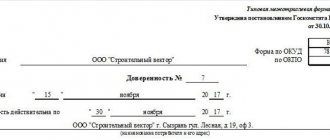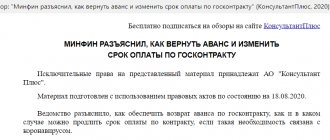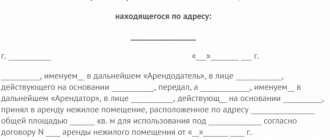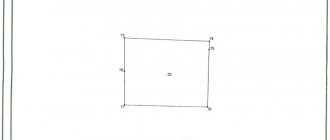In “1C: Accounting 8”, starting with version 3.0.65, you can reflect the gratuitous transfer of goods - gifts, winnings, prizes, promotional items, etc. - using the “Gratuitous Transfer” document. We also talk about the taxation of transactions involving the gratuitous transfer of property.
On the legal regulation, personal income tax taxation of gifts to employees and the procedure for reflecting income in the form of gifts in the 1C: Salaries and Personnel Management 8 program, edition 3, see the article “Gifts to employees: how to register and reflect in 1C.”
We come across the gratuitous transfer of goods, work results and services quite often. These are situations when the following are transmitted:
- gifts for employees and (or) their children;
- gifts to employees of counterparty organizations;
- winnings and prizes in competitions, competitions, games and other events;
- product samples for potential buyers, including food products for tasting;
- printing and souvenir products for advertising purposes;
- goods (work, services) for charitable purposes;
- bonus products;
- stationery and printing products at seminars, conferences and symposiums.
This list can be continued. Sometimes such transfers are due to business customs and traditions accepted in society. Sometimes directly related to economic benefits that can be obtained in the future. In any case, gratuitous transfers allow you to create a positive image of the company.
Let's look at how gratuitous transfers are regulated by civil and tax laws, as well as accounting regulations.
Reasons
If we are talking about accepting a donation by a budgetary institution, then you will need to first conclude a gift or donation agreement. The latter document is one of the types of gift agreement, but has its own nuances.
The donation agreement is described in detail in the first paragraph of Article 572 of the Civil Code of the Russian Federation.
A donation can also be made orally (this is clearly stated in the first paragraph of Article 574 of the Civil Code of the Russian Federation), but only if:
- The cost of material assets does not exceed 3 thousand rubles.
- The donor is not a legal entity.
- There is no promise in the terms to give a gift in the future.
- A gift is movable property.
If the object of the gift is real estate, then such an agreement is additionally subject to state registration. In all other cases, a corresponding agreement is drawn up between the parties. And the act of gratuitous transfer of material assets is simply an annex to it. Moreover, the main functionality of this document is in a specific list of transferred goods.
Charity
If you transfer goods as part of charity (except for excisable goods), then such sales are exempt from VAT (subclause 12, clause 3, article 149 of the Tax Code of the Russian Federation).
Charity is the voluntary activity of individuals in the transfer of property to citizens or legal entities free of charge or on preferential terms (Article 1 of the Federal Law of August 11, 1995 No. 135-FZ “On Charitable Activities and Volunteering (Volunteering)”).
Exemption from VAT will have to be confirmed by the following documents:
- an agreement or contract on the free transfer of goods;
- act of acceptance and transfer.
Form
There are special requirements for the execution of gift and donation agreements. Without them, such documentation will not have legal force. All standards are set out in Article 574 of the Civil Code of the Russian Federation. The details of all parties involved, the city of registration, and the date of signing must be indicated. You also cannot do without the full names of representatives of all parties.
An important nuance: the donor in the contract can indicate the specific purpose of material assets, and the donee in this case undertakes to provide a report on the work done.
Transfer of winnings and prizes to competition winners
The transfer of winnings and prizes to individuals based on the results of contests, competitions and other events is also recognized as a gratuitous sale and is subject to VAT. In this sense, prizes are no different from gifts.
For profit tax purposes, expenses for the acquisition (production) of prizes awarded to the winners of drawings of such prizes during mass advertising campaigns are considered standard advertising expenses (Clause 4 of Article 264 of the Tax Code of the Russian Federation). Such expenses will be recognized in an amount not exceeding 1% of sales revenue, determined in accordance with Article 249 of the Tax Code of the Russian Federation.
If the holding of a contest or competition does not pursue advertising purposes, is not provided for by a collective agreement and is not included in the remuneration system, then the cost of winnings will not be included in expenses.
As for personal income tax, the cost of winnings and prizes received in competitions, competitions, games is taxed at the following rates (clauses 1, 2 of Article 224, clause 28 of Article 217 of the Tax Code of the Russian Federation):
- 35% - in terms of exceeding 4,000 rubles, if the event is held for the purpose of advertising goods, works and services;
- 13% and without applying a deduction of 4,000 rubles, if the event is held for other purposes (letter of the Ministry of Finance of Russia dated August 20, 2018 No. 03-04-05/58919);
- 13% - in terms of excess of 4,000 rubles, if the event is held according to decisions of the Government of the Russian Federation and representative authorities (letter of the Ministry of Finance of Russia dated November 14, 2018 No. 03-04-06/81966).
Let's look at how in "1C: Accounting 8" (rev. 3.0) you can reflect the transfer of prizes to the winners of a drawing held as part of an advertising campaign.
Example 2
| Modern Technologies LLC is participating in the exhibition in March 2021, where it is holding a prize draw among visitors for advertising purposes. A total of 10 prizes worth RUB 1,200.00 are being drawn. (including VAT 20% - RUB 200.00). The winners are determined by random sampling using a computer program. According to tax accounting data, the amount of expenses for holding prize draws does not exceed 1% of sales revenue for the current reporting period. |
It is also convenient to reflect the transfer of prizes using the Gratuitous Transfer document. The procedure for filling out the Products tab is similar to the procedure described in Example 1. Since prizes are given to an indefinite number of people, the Recipient field also does not need to be filled out.
On the Cost account tab in the Cost account field, you should independently set the required account (for example, account 44.01 “Distribution costs in organizations engaged in trading activities” with the expense type Advertising expenses (standardized)).
According to the Ministry of Finance of Russia and the Federal Tax Service of Russia, expenses in the form of VAT amounts paid by an organization when distributing advertising products free of charge cannot be taken into account when calculating income tax (letter of the Ministry of Finance of Russia dated March 11, 2010 No. 03-03-06/1/123, dated November 20, 2006 No. 02-1-07/92). This conclusion can be extended to the transfer of prizes to the winners of a drawing held as part of an advertising campaign. Therefore, in the VAT Account field, you should leave account 91.02, which is offered by the program by default (Fig. 3).
Rice. 3. Cost accounts for the transfer of prizes as part of an advertising campaign
After posting the Gratuitous Transfer document, the following accounting register entries are generated:
Debit 44.01 Credit 41.01 - for the cost of prizes (10,000 rubles). Debit 91.02 Credit 68.02 - for the amount of accrued VAT (2,000 rubles).
For tax accounting purposes for income tax, amounts are entered into special resources of the accounting register:
Amount Dt NU 44.01 and Amount Kt NU 41.01 - for the cost of prizes (10,000 rubles). Amount Dt PR 91.02 - for a constant difference (2,000 rubles).
In the month of transfer of prizes, after completion of the month-closing processing and completion of the regulatory operation Calculation of deferred tax according to PBU 18, a constant tax expense will be recognized:
Debit 99.02.3 Credit 68.04.2 - in the amount of 400 rubles. (RUB 2,000 x 20%).
The settlement certificate or summary invoice issued upon transfer of prizes will be recorded in the sales book with the transaction type code “10”. The cost of the prizes issued will be included in indirect expenses, which are reflected in the income tax return on line 040 of Appendix No. 2 to Sheet 02.
In the statement of financial results, the cost of prizes is reflected in line 2210 “Business expenses”, and the amount of accrued VAT is reflected in line 2350 “Other expenses”.
| 1C:ITS For information on how to reflect the accrual of VAT for advertising distribution of goods, see the reference book “Accounting for Value Added Tax” in the “Accounting and Tax Accounting” section. |
To whom can material assets be transferred free of charge?
Both private and legal entities, as well as various institutions, can act as recipients of donations, including:
- Hospitals, treatment centers.
- Educational and educational institutions of various types.
- Social protection organizations.
- Charitable organizations and foundations.
- Scientific organizations.
- Museums, exhibitions.
- Religious and public organizations.
These points are spelled out in more detail in Article 124 of the Civil Code of the Russian Federation.
An important point: such organizations do not require anyone’s permission to accept a donation. This is clearly stated in the second paragraph of Article 582 of the Civil Code of the Russian Federation.
Thus, even a government agency has the right to accept donations in the form of material assets. It is important that this fact is correctly legally documented. Otherwise, the accounting department of the institution will have many unsolvable problems.
Filling out the act of gratuitous transfer
Like all documents of this kind, the act consists of several parts. From top to bottom the following information should be indicated:
- Title of the document.
- Number. Subsequently, it is indicated in the registration papers.
- Date of signing. Sometimes the composition number is indicated separately, but this is not necessary. It is important that at least one date is present in the act.
- Information about the donor company. It includes the full name of the representative, as well as a link to the document according to which the latter acts.
- The name of the organization to which the inventory items are transferred. Here it is also important to indicate the full name of the representative and the document on the basis of which he has the right to sign acts of this kind.
- List of property that is transferred free of charge.
- How many copies of the act have been drawn up?
- Signatures of representatives of the parties involved in the transfer.
Table
The list of goods and materials required for the act of gratuitous transfer of material assets can be drawn up in the form of a table. In the sample available for download, this table contains several columns:
- Serial number of the name of the material value.
- The name itself.
- The number of units of goods of one name.
- The price of one transferred unit.
- The total amount of material assets transferred free of charge.
In official papers it is also customary to summarize tables. This paper is no exception. At the end of the table the total amount of transferred values should be indicated. If the exact figure is not known, you can use the average market value for a specific item.
Postings in accounting
The transferring party makes such entries in its accounting.
- Debit 91 subaccount other expenses Credit 41
- the cost of goods transferred free of charge is written off based on the invoice.
- VAT is charged on the free transfer of goods based on an invoice.
The gratuitous transfer of goods worth more than 3,000 rubles in relations between commercial organizations is prohibited (subclause 4, clause 1, article 575 of the Civil Code of the Russian Federation).
Nuances of the agreement
The Civil Code (specifically, paragraph three of its article 582) implies an interesting point. The donor can describe the purpose of the transferred material assets and their use for a specific purpose. The gift agreement may also specify the forms of the report that the donee provides to the donor. If these conditions are clearly stated, then the organization that accepted the donation must maintain separate records for the donated property.
Typically, the act of gratuitous transfer of material assets is filled out in duplicate. One remains with the giver, the second - with the recipient of the gift. It is important to have signatures and a list.
Acts in the form of attachments are kept for the same amount of time as a gift agreement. And it may not have a statute of limitations at all.
How to issue an invoice
Since the gratuitous transfer of goods is considered a sale, you will have to issue an invoice in accordance with the general procedure (clause 3 of Article 168 of the Tax Code of the Russian Federation).
Read in the berator “Practical Encyclopedia of an Accountant”
Gratuitous transfer - a special case of implementation
Fill out the invoice in one copy. Two are not needed, since the recipient of the gratuitous goods does not accept VAT for deduction (see letter of the Ministry of Finance dated December 13, 2021 No. 03-03-05/74496).
In the invoice, indicate the market value of the transferred goods and the amount of VAT calculated for payment to the budget.
The market price is the value specified in the contract if the parties are not interdependent (clause 1 of Article 105.3, clause 2 of Article 154 of the Tax Code of the Russian Federation). That is, it is the price at which you sold similar goods to other unrelated parties in the ordinary course of your business.
An invoice must be issued within 5 days from the date of shipment. If the moment of shipment is recorded in the invoice, then within 5 days from the date of its issuance, including the date of registration.
Read in the berator “Practical Encyclopedia of an Accountant”
How to fill out an invoice






